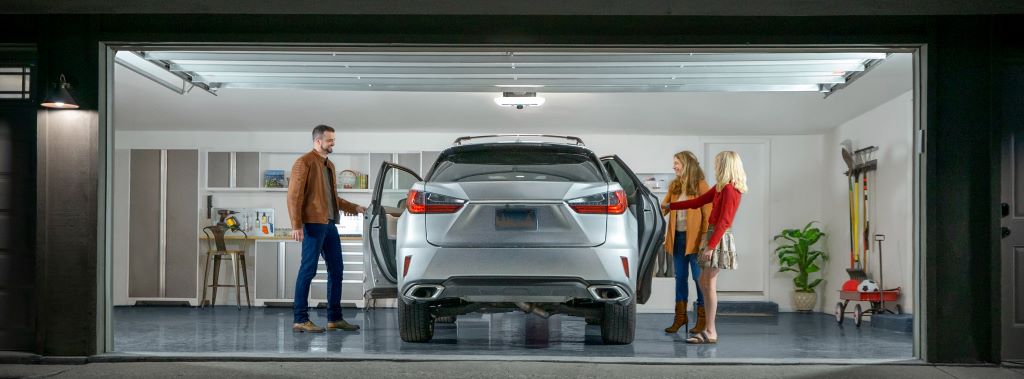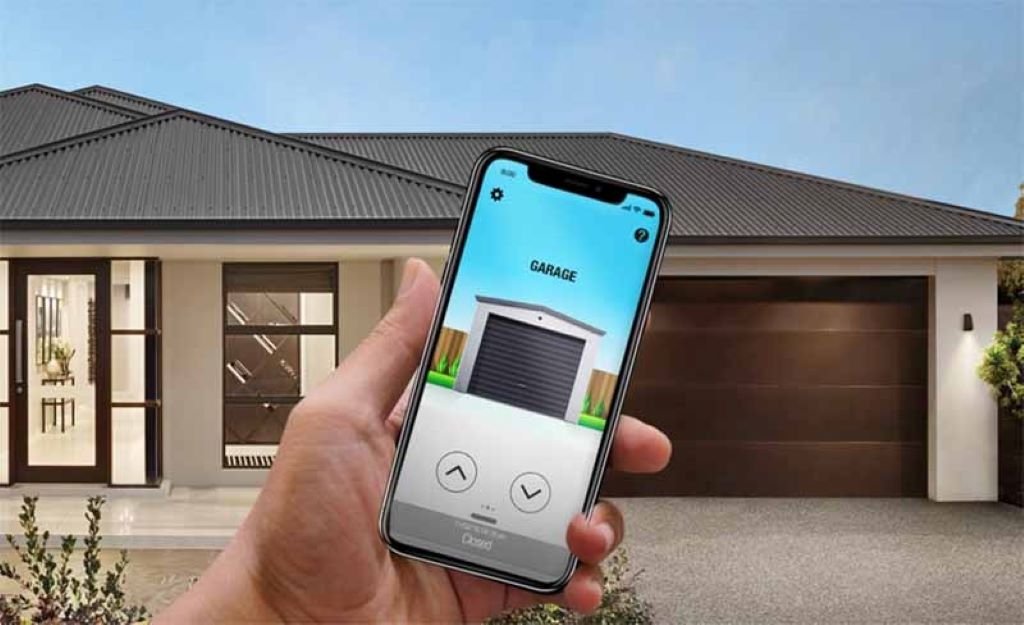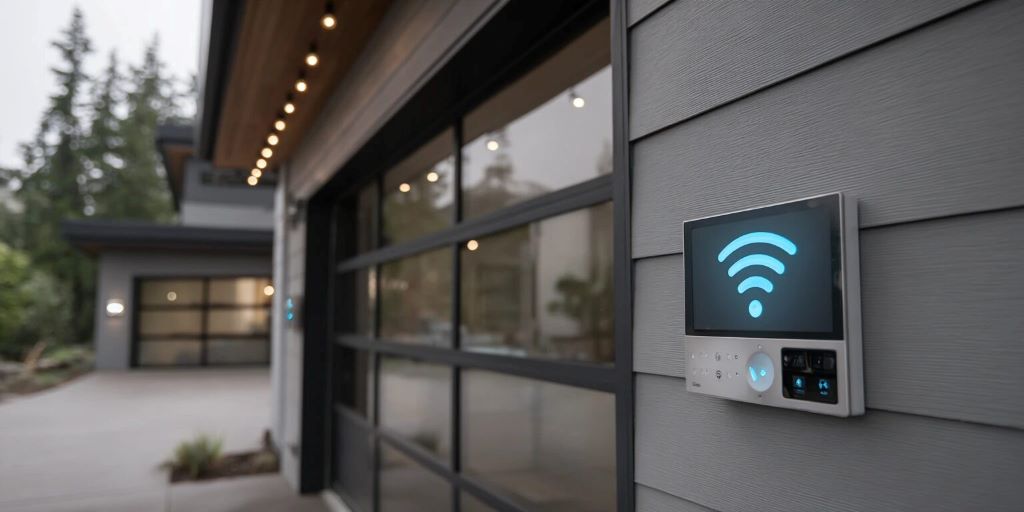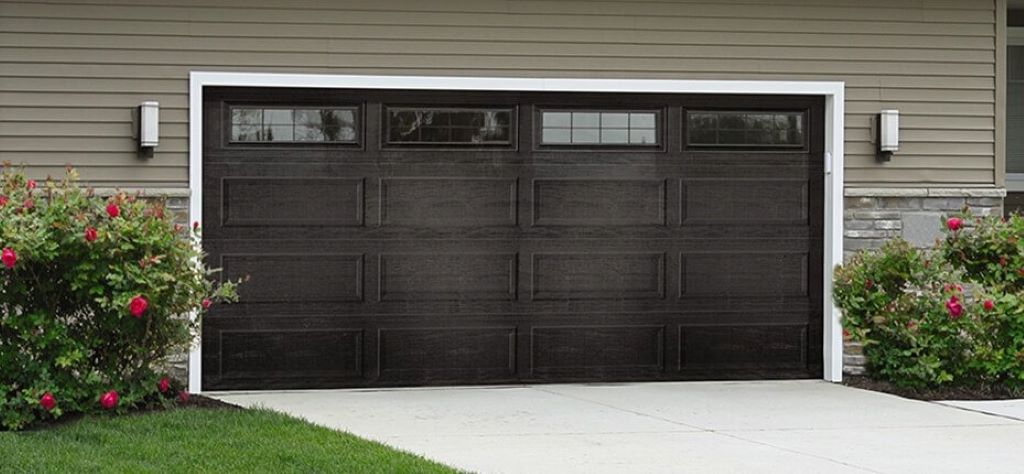Smart Garage Doors: How Tech Is Revolutionizing the American Driveway
Smart garage doors are transforming the American driveway, blending convenience, security, and innovation. With technology advancing rapidly, homeowners now control their garages from anywhere using smartphones, enhancing both safety and ease. This blog post explores how smart garage door technology is reshaping daily life, offering practical benefits and futuristic appeal. From remote access to energy efficiency, we’ll dive into the features driving this revolution, supported by reliable data and personal insights. Whether you’re a tech enthusiast or a homeowner seeking upgrades, discover how these systems elevate the modern driveway experience.
What Are Smart Garage Doors and How Do They Work?
Smart garage doors integrate advanced technology like Wi-Fi, sensors, and smartphone apps to offer remote control and monitoring. Unlike traditional openers, these systems connect to your home’s network, allowing you to open or close the garage from anywhere. For instance, a smart opener like Chamberlain’s myQ uses an app to send real-time alerts if the door is left open. Sensors detect motion or obstructions, ensuring safety. According to a 2023 Parks Associates survey, 9% of U.S. households use smart garage systems, reflecting growing adoption.
These systems often include voice control via Alexa or Google Assistant, adding hands-free convenience. Installation is straightforward, with many retrofitting existing openers. My neighbor, John, installed a Meross retrofit kit and now checks his garage while at work, avoiding the worry of an open door. However, reliable Wi-Fi is crucial for seamless operation. Without it, remote features may falter, so ensure your garage has strong connectivity before upgrading.
Key Benefits of Smart Garage Door Technology
Smart garage doors enhance convenience, security, and energy efficiency. Remote access lets you open the door for deliveries or guests from anywhere, saving time. Real-time notifications alert you to unexpected activity, boosting peace of mind. For example, I once received an alert when my garage was opened unexpectedly, allowing me to secure it remotely. Additionally, integration with smart home ecosystems like Google Home streamlines daily routines.
Energy efficiency is another advantage. Automated doors can sync with climate control systems to reduce heat loss, especially in colder regions. A 2024 U.S. Department of Energy report notes that insulated smart garage doors can cut energy costs by up to 15% in homes with attached garages. Despite higher initial costs, these systems add long-term value through savings and increased home appeal. Compatibility with existing openers makes upgrades accessible, though professional installation may be needed for complex setups.
Top Benefits of Smart Garage Doors
- Convenience: Control your garage from anywhere using a smartphone app.
- Security: Get instant alerts for unauthorized access or open doors.
- Energy Savings: Insulated doors and automation reduce energy waste.
- Integration: Sync with Alexa, Google Home, or SmartThings for seamless control.
- Accessibility: Features like keyless entry support diverse user needs.
How Smart Garage Doors Enhance Home Security
Security is a top reason homeowners adopt smart garage doors. These systems use advanced features like rolling code technology, which changes the access code after each use, preventing hacking. Smart cameras with motion detection, like those in Chamberlain’s systems, provide real-time video feeds. My friend Sarah caught a package thief on her garage camera, alerting police instantly. Additionally, geofencing can automatically lock the door when you leave, reducing risks.
However, vulnerabilities exist. Weak Wi-Fi signals or outdated firmware can expose systems to breaches. Regular updates and strong passwords are essential. A 2024 study by the National Institute of Standards and Technology (NIST) found that 70% of smart home devices face cybersecurity risks if not properly maintained. To stay secure, opt for systems with robust encryption and pair them with keyless entry pads or biometric scanners for added protection.
Energy Efficiency and Environmental Impact
Smart garage doors contribute to energy efficiency by integrating with home automation systems. Insulated doors paired with smart thermostats maintain stable garage temperatures, reducing heating or cooling costs. For example, scheduling the door to close at night prevents heat loss. The U.S. Department of Energy highlights that well-insulated garage doors can improve home energy efficiency by 10-15%. This is especially valuable in regions with extreme weather.
Environmentally, these systems reduce energy waste, aligning with eco-friendly trends. Some doors use sustainable materials like recycled steel, minimizing environmental impact. However, the production of smart tech components can have a carbon footprint. Choosing energy-efficient models and maintaining them properly extends their lifespan, reducing waste. For instance, I programmed my garage door to close automatically at dusk, saving energy and ensuring security without daily effort.

Integration with Smart Home Ecosystems
Smart garage doors shine in their ability to integrate with broader smart home systems. Compatibility with platforms like Amazon Alexa, Google Home, or Apple HomeKit allows voice-controlled operation. For example, saying, “Alexa, close the garage,” simplifies tasks. These systems also sync with routines, like locking the door and turning off lights when you leave. My cousin integrated his garage door with SmartThings, automating his entire home’s security.
This integration enhances functionality but requires compatible devices. Check your opener’s compatibility before purchasing. Some systems, like Tailwind’s iQ3, support multiple platforms, offering flexibility. However, complex setups may need professional help, increasing costs. Despite this, the seamless control and automation make smart garage doors a cornerstone of modern homes, transforming the driveway into a connected, efficient hub.
Considerations Before Upgrading to Smart Garage Doors
Before investing, evaluate compatibility, cost, and connectivity. Ensure your existing opener works with retrofit kits like Meross or Tailwind, as some older models may not. Costs range from $50 for retrofits to $500 for full systems, with installation adding $100-$200. A stable Wi-Fi connection is critical; weak signals disrupt remote access. I learned this when my router struggled to reach the garage, requiring a Wi-Fi extender.
Security features vary, so prioritize encryption and rolling codes. Maintenance is another factor—sensors and software need regular updates. Research trusted brands like Chamberlain or Clopay, and read user reviews. While the upgrade boosts convenience, weigh the initial investment against long-term benefits like energy savings and home value. Consulting a professional can clarify options, ensuring a smooth transition to a smarter driveway.
Key Considerations for Upgrading
- Compatibility: Confirm your opener works with smart retrofit kits.
- Cost: Budget for hardware ($50-$500) and installation ($100-$200).
- Connectivity: Ensure strong Wi-Fi for reliable remote access.
- Security: Choose systems with encryption and rolling code technology.
- Maintenance: Plan for regular software and sensor updates.
Future Trends in Smart Garage Door Technology
The future of smart garage doors is exciting, with innovations like AI-powered security and smart parking assist on the horizon. AI can analyze camera footage to detect suspicious activity, while parking systems guide vehicles with precision. Geofencing, already popular, will become standard, automatically opening doors as you approach. A 2025 report predicts the smart home market, including garages, will reach $322.9 billion globally.
Voice control will expand, with tighter integration into virtual assistants. Energy-efficient designs will incorporate solar-powered openers, reducing reliance on electricity. However, these advancements may raise costs and complexity. Staying informed about trends ensures you choose systems that remain relevant. As technology evolves, smart garage doors will continue transforming the American driveway into a secure, efficient gateway.
Conclusion
Smart garage doors are revolutionizing the American driveway, offering unmatched convenience, security, and efficiency. From remote access to energy-saving automation, these systems redefine how we interact with our homes. Despite challenges like connectivity and costs, the benefits—backed by data showing growing adoption—make them a worthwhile investment. As technology advances, smart garages will become even more integral to modern living. Ready to upgrade your driveway? Share your thoughts or experiences in the comments below, or pass this article along to inspire others!
FAQs
How do smart garage doors improve home security?
They use rolling codes, real-time alerts, and cameras to deter unauthorized access and monitor activity.
Can I retrofit my existing garage door to be smart?
Yes, kits like Meross or Tailwind add smart features to compatible openers for $50-$100.
Do smart garage doors save energy?
Insulated doors and automation reduce heat loss, cutting energy costs by 10-15%.
What’s the cost of a smart garage door system?
Retrofits cost $50-$150; full systems range from $200-$500, plus installation.
Are smart garage doors compatible with Alexa or Google Home?
Most systems, like Chamberlain’s myQ, integrate with Alexa, Google Home, or SmartThings.
Read More:
Ideas to prepare your terrace and receive the spring





